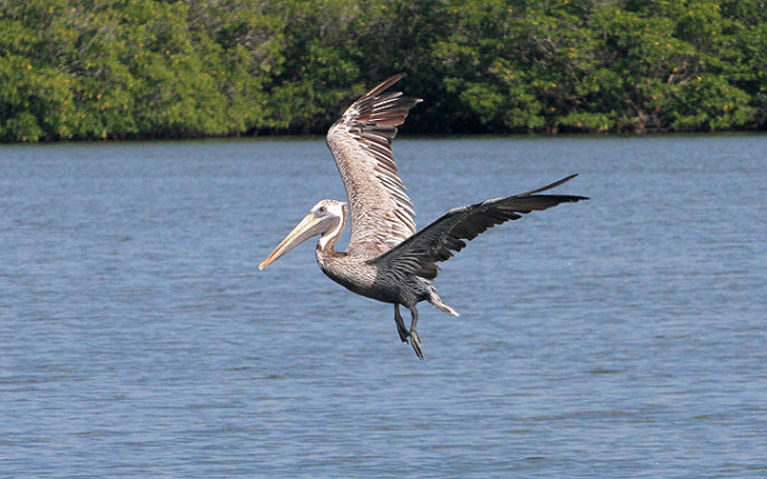
INDIAN RIVER COUNTY — The Florida Inland Navigation District will soon begin dredging the Intracoastal Waterway in north Indian River County for the first time in more than 50 years after sweeping aside objections that the dredged muck to be dumped in Sebastian poses health concerns.
The project had been 17 years in the making and stirred major controversy in 2011 when the Army Corps of Engineers began digging a 70-acre containment pit for dredged material at Duck Point in Sebastian.
Indian River County Commissioners and Rep. Debbie Mayfield joined with concerned scientists and local residents to demand sediment be tested for toxins before dredging.
When muck samples were tested in 2012, no dangerous levels of toxins were detected, but project opponents say the testing was inadequate.
They continue to believe the dredging and storage of dredged materials in in Sebastian will harm the environment and potentially endanger residents, but FIND executive director Mark Crossly says clearing out the channel poses no danger and will have both navigational and ecological benefits.
“The dredging is needed for navigation, but it will also remove fine sediment from our channel that tends to get stirred up by boats, clouding the water,” Crossly says. “Removing that kind of material is always a benefit to water quality.”
The Army Corps of Engineers is overseeing the project.
In September, the Corps contracted with Cavache, Inc, a dredging company based in Pompano Beach, to remove 300,000 cubic yards of muck from the navigation channel between the Wabasso Causeway and the Sebastian Inlet at a cost of $6,058,675.
Cavache will use a hydraulic vacuum to suck sand, organic material and water out of the navigation channel, which is supposed to be maintained at a 12-foot depth, and then pump the slurry into the storage pit on the shore of the lagoon across from Whispering Pines Mobile Home Park.
The work will begin this month and is expected to take 150 days to complete.
Crossly says the dredged material could dry out in as little as six months after it is placed in the pit, depending on the amount of rainfall during the period.
The 300,000 cubic yards will fill up about a third of the pit, according to Crossly, and FIND plans to leave the material there more or less permanently.
“If we fill the pit up and need additional storage at some point, we will dig the area out and haul the material away so the pit can be used again,” he says, but he adds that would be many years in the future.
In the meantime, local governments can contact FIND if they want to use the dried-out dredge material for road building or other projects.
FIND, a special taxing district created by the Florida Legislature in 1927 to establish and keep open a waterway along Florida’s Atlantic coast, began planning the dredging project and storage pit in 1997.
At that time, the district did some sediment testing, which found no contamination, and held public meetings to inform residents and hear feedback about the plan.
In 2001, FIND bought a 180-acre property across from Whispering Pines known as Vickers Grove as a containment site. In 2007, it began the process of seeking a permit to build the dredge material storage area, officially known as DMMA Site IR-2.
No additional contamination testing was done and no meetings were held to update the public.
When the permit was granted and construction on the pit began in early 2011, it caught residents by surprise.
Many of them had moved to the area in the years since the public meetings in the 1990s and discovering what was going on in a piecemeal way stirred up fear and resentment.
Hostility to the project increased when local groups realized FIND had not tested the muck it planned to dredge for toxic substances in 14 years.
When project opponents packed a county commission meeting in June 2011, county commissioners, State Rep. Debbie Mayfield and other area politicians saw the handwriting on the wall and added their voices to the chorus calling for new tests.
In September 2011, FIND agreed to retest the muck and said testing would likely be underway within 60 days.
But FIND’s first testing plan did not satisfy project opponents or some area scientists, including John H. Trefry, Professor of Chemical Oceanography at the Florida Institute of Technology, who said the depth and frequency of samples was not adequate to protect public safety.
When a more extensive set of tests were finally done in 2012, the sediment was remarkably clean.
Dr. Hal Goforth, a retired Navy research scientist and widely published professor of marine biology, was one of the leaders of a group of more than 600 Sebastian residents who opposed the project in 2011.
He says the test samples were not taken from a deep enough level to tell the true story of possible contamination.
“We don’t know the levels of metals and organic materials that lie just below the ‘new channel bottom’,” Goforth wrote in an email to Vero Beach 32963 last week.
Residents have also expressed concern about noise and dust at the containment site when work begins, but Crossly says those concerns, too, are unfounded.
“We know there are people still opposed to the site, but we need it. Hopefully one day they will realize that it is not an intensive use and that we are a quiet neighbor.”



